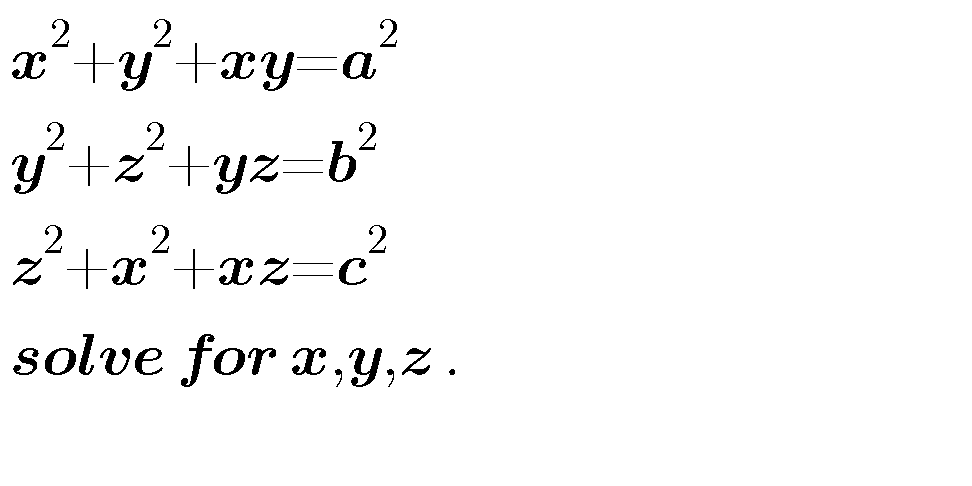
AllQuestion and Answers: Page 1943
Question Number 14243 Answers: 2 Comments: 0
$$\int\:\left[\mathrm{x}\:\left(\mathrm{lnx}\right)^{\mathrm{2}} \right]\:\mathrm{dx} \\ $$
Question Number 14189 Answers: 2 Comments: 0
Question Number 14181 Answers: 1 Comments: 0
$$\int\:\mathrm{sec}^{\mathrm{6}} \left(\mathrm{x}\right)\:\:\mathrm{dx}\:\: \\ $$
Question Number 14174 Answers: 1 Comments: 0
Question Number 14172 Answers: 0 Comments: 0

Question Number 14171 Answers: 0 Comments: 0

Question Number 14170 Answers: 0 Comments: 0

Question Number 14169 Answers: 0 Comments: 0

Question Number 14157 Answers: 2 Comments: 11

Question Number 14156 Answers: 1 Comments: 0
$$\mathrm{please}\:\mathrm{what}\:\mathrm{does}\:\omega\:\mathrm{mean}? \\ $$
Question Number 14152 Answers: 1 Comments: 0

Question Number 14148 Answers: 2 Comments: 0
Question Number 14147 Answers: 0 Comments: 1
Question Number 14145 Answers: 1 Comments: 1

Question Number 14144 Answers: 1 Comments: 0

Question Number 14139 Answers: 1 Comments: 1

Question Number 14130 Answers: 1 Comments: 4
Question Number 14128 Answers: 1 Comments: 0
Question Number 14119 Answers: 0 Comments: 10
Question Number 14113 Answers: 0 Comments: 4
Question Number 14109 Answers: 0 Comments: 3
Question Number 14104 Answers: 0 Comments: 0

Question Number 18672 Answers: 0 Comments: 0

Question Number 14100 Answers: 0 Comments: 0
Question Number 14079 Answers: 0 Comments: 2

Question Number 14078 Answers: 3 Comments: 4

Pg 1938 Pg 1939 Pg 1940 Pg 1941 Pg 1942 Pg 1943 Pg 1944 Pg 1945 Pg 1946 Pg 1947
